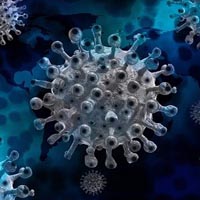mRNA vaccines: Why and how they should be modified

Accepted: September 29, 2021
All claims expressed in this article are solely those of the authors and do not necessarily represent those of their affiliated organizations, or those of the publisher, the editors and the reviewers. Any product that may be evaluated in this article or claim that may be made by its manufacturer is not guaranteed or endorsed by the publisher.
The COVID-19 pandemic has stimulated the production of different therapeutic approaches for the resolution of coronavirus infections. On one hand, nanobiomolecules have been proposed as bait material for viruses,1,2 on the other hand unconventional messenger RNA vaccines have been produced like SARS-CoV-2 mRNA vaccines (BioNTech/Pfizer BNT162b2 and Moderna mRNA-1273). [...]
Feliciello I, Procino A. The pulmonary-proteoliposome as a new therapeutic approach for Coronaviruses. Hum Vaccin Immunother 2020;16:2373. DOI: https://doi.org/10.1080/21645515.2020.1758534
Tombácz I, Weissman D, Pardi N. Vaccination with messenger RNA: a promising alternative to DNA vaccination. Methods Mol Biol 2021;2197:13-31. DOI: https://doi.org/10.1007/978-1-0716-0872-2_2
Pardi N, Weissman D. Nucleoside modified mRNA vaccines for infectious diseases. Methods Mol Biol 2017;1499:109-21. DOI: https://doi.org/10.1007/978-1-4939-6481-9_6
Youn H, Chung JK. Modified mRNA as an alternative to plasmid DNA (pDNA) for transcript replacement and vaccination therapy. Expert Opin Biol Ther 2015;15:1337-48. DOI: https://doi.org/10.1517/14712598.2015.1057563
Funk CD, Laferrière C, Ardakani A. A snapshot of the global race for vaccines targeting SARS-CoV-2 and the COVID-19 pandemic. Front Pharmacol 2020;11:937. DOI: https://doi.org/10.3389/fphar.2020.00937
Orlandini von Niessen AG, Poleganov MA, Rechner C, et al. Improving mRNA-based therapeutic gene delivery by xpression-augmenting 3' UTRs identified by cellular library screening. Mol Ther 2019;27:824-36. DOI: https://doi.org/10.1016/j.ymthe.2018.12.011
Wadhwa A, Aljabbari A, Lokras A, et al. Opportunities and challenges in the delivery of mRNA-based vaccines. Pharmaceutics 2020;12:102. DOI: https://doi.org/10.3390/pharmaceutics12020102
Liu MA. A comparison of plasmid DNA and mRNA as vaccine technologies. Vaccines (Basel) 2019;7:37. DOI: https://doi.org/10.3390/vaccines7020037
Doerfler W. Adenoviral vector DNA- and SARS-CoV-2 mRNA-based Covid-19 vaccines: possible integration into the human genome - are adenoviral genes expressed in vector-based vaccines? Virus Res 2021;302:198466. DOI: https://doi.org/10.1016/j.virusres.2021.198466
Jones RB, Song H, Xu Y, et al. LINE-1 retrotransposable element DNA accumulates in HIV-1-infected cells. J Virol 2013;87:13307-20. DOI: https://doi.org/10.1128/JVI.02257-13
International Human Genome Sequencing Consortium. Initial sequencing and analysis of the human genome. Nature 2001;409:860-921. Erratum in: Nature 2001;412:565. Erratum in: Nature 2001;411:720. DOI: https://doi.org/10.1038/35079657
Mita P, Wudzinska A, Sun X, et al. LINE-1 protein localization and functional dynamics during the cell cycle. Elife 2018;7:e30058. DOI: https://doi.org/10.7554/eLife.30058
Denli AM, Narvaiza I, Kerman BE, T et al. Primate-specific ORF0 contributes to retrotransposon-mediated diversity. Cell 2015;163:583-93. DOI: https://doi.org/10.1016/j.cell.2015.09.025
Baillie JK, Barnett MW, Upton KR, et al. Somatic retrotransposition alters the genetic landscape of the human brain. Nature 2011;479:534-7. DOI: https://doi.org/10.1038/nature10531
Zhang Y, Li S, Abyzov A, Gerstein MB. Landscape and variation of novel retroduplications in 26 human populations. PLoS Comput Biol 2017;13:e1005567. DOI: https://doi.org/10.1371/journal.pcbi.1005567
Casola C, Betrán E. The genomic impact of gene retrocopies: what have we learned from comparative genomics, population genomics, and transcriptomic analyses? Genome Biol Evol 2017;9:1351-73. DOI: https://doi.org/10.1093/gbe/evx081
Doucet AJ, Wilusz JE, Miyoshi T et al. A 3' poly(A) tract is required for LINE-1 retrotransposition. Mol Cell 2015;60:728-41. DOI: https://doi.org/10.1016/j.molcel.2015.10.012
Naufer MN, Furano AV, Williams MC. Protein-nucleic acid interactions of LINE-1 ORF1p. Semin Cell Dev Biol 2019;86:140-9. DOI: https://doi.org/10.1016/j.semcdb.2018.03.019
Kazazian HH Jr, Moran JV. Mobile DNA in health and disease. N Engl J Med 2017;377:361-70. DOI: https://doi.org/10.1056/NEJMra1510092
Naufer MN, Furano AV, Williams MC. Protein-nucleic acid interactions of LINE-1 ORF1p. Semin Cell Dev Biol 2019;86:140-9. DOI: https://doi.org/10.1016/j.semcdb.2018.03.019
Richardson SR, Salvador-Palomeque C, Faulkner GJ. Diversity through duplication: Whole-genome sequencing reveals novel gene retrocopies in the human population. BioEssays 2014;36:475–81. DOI: https://doi.org/10.1002/bies.201300181
Chatron N, Cassinari K, Quenez O, et al. Identification of mobile retrocopies during genetic testing: Consequences for routine diagnosis. Human Mutation 2019;40:1993–2000. DOI: https://doi.org/10.1002/humu.23845
Gardner EJ, Prigmore E, Gallone G, et al. Contribution of retrotransposition to developmental disorders. Nat Commun 2019;10:4630. DOI: https://doi.org/10.1038/s41467-019-12520-y
ICGC Breast Cancer Group, Cooke SL, Shlien A, Marshall J et al. Processed pseudogenes acquired somatically during cancer development. Nat Commun 2014;5:3644. DOI: https://doi.org/10.1038/ncomms4644
Scott E, Devine S. The role of somatic L1 retrotransposition in human cancers. Viruses 2017;9:131. DOI: https://doi.org/10.3390/v9060131
PCAWG Structural Variation Working Group, PCAWG Consortium, Rodriguez-Martin B, Alvarez EG, Baez-Ortega et al. Pan-cancer analysis of whole genomes identifies driver rearrangements promoted by LINE-1 retrotransposition. Nat Genet 2020;52:306–19. DOI: https://doi.org/10.1038/s41588-019-0562-0
Andries O, Mc Cafferty S, De Smedt SC, et al. N1-methylpseudouridine-incorporated mRNA outperforms pseudouridine-incorporated mRNA by providing enhanced protein expression and reduced immunogenicity in mammalian cell lines and mice. J Controll Release 2015;217:337–44. DOI: https://doi.org/10.1016/j.jconrel.2015.08.051
Parr CJC, Wada S, Kotake K et al. N 1-Methylpseudouridine substitution enhances the performance of synthetic mRNA switches in cells. Nucleic Acids Research 2020;48:e35–e35. DOI: https://doi.org/10.1093/nar/gkaa070
Barragán-Iglesias P, Lou TF, Bhat VD et al. Inhibition of Poly(A)-binding protein with a synthetic RNA mimic reduces pain sensitization in mice. Nat Commun 2018;9:10. DOI: https://doi.org/10.1038/s41467-017-02449-5
Zhang L, Richards A, Barrasa MI, et al. Reverse-transcribed SARS-CoV-2 RNA can integrate into the genome of cultured human cells and can be expressed in patient-derived tissues. Proc Natl Acad Sci USA 2021;118:e2105968118. DOI: https://doi.org/10.1073/pnas.2105968118
PAGEPress has chosen to apply the Creative Commons Attribution NonCommercial 4.0 International License (CC BY-NC 4.0) to all manuscripts to be published.


 https://doi.org/10.4081/jbr.2021.10072
https://doi.org/10.4081/jbr.2021.10072



